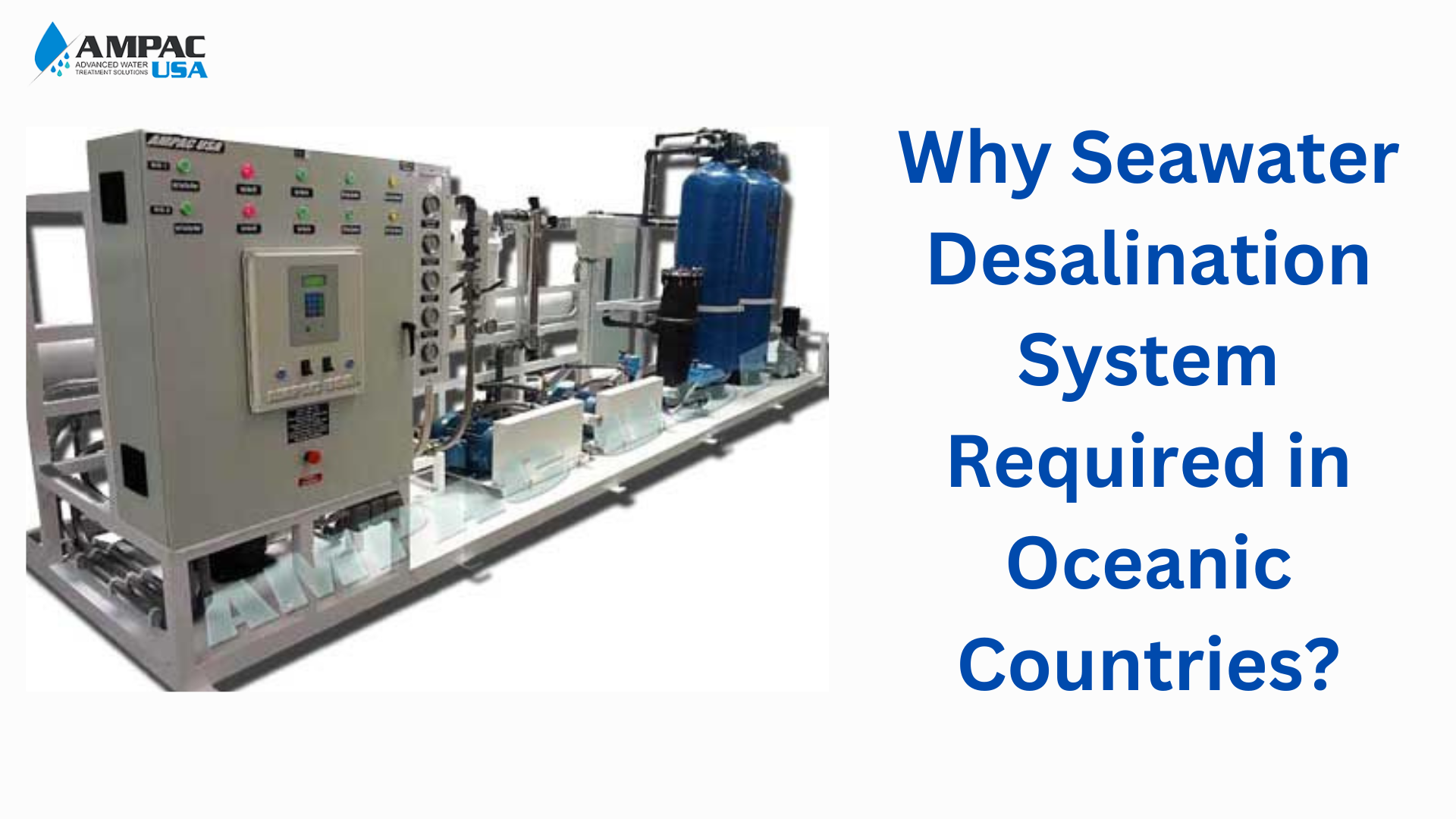
In an period the place water shortage poses a major problem to sustainable improvement, oceanic international locations discover themselves in a paradoxical state of affairs. Surrounded by huge expanses of water, but struggling to satisfy their freshwater wants, these nations are more and more turning to seawater desalination system as a viable answer. This know-how, which transforms saline water into potable water, is not only an choice however a necessity for guaranteeing water safety and supporting the socioeconomic development of oceanic areas.
The Crucial of Water Safety
For oceanic international locations, the hunt for water safety is paramount. With restricted freshwater assets, these nations face the daunting problem of offering their populations with ample, protected, and accessible water. Seawater desalination presents a constant and dependable supply of freshwater, mitigating the dangers related to standard sources reminiscent of rivers and groundwater, which are sometimes topic to variability and contamination.
Supporting Socioeconomic Improvement
Financial actions in oceanic international locations, significantly tourism, agriculture, and trade, demand substantial water provides. Seawater desalination not solely ensures the supply of this crucial useful resource but additionally promotes sustainable practices by lowering overreliance on finite freshwater sources. By securing water for irrigation, manufacturing, and service sectors, desalination helps various financial actions, fueling development and prosperity.
Learn: How Seawater Desalination is Changing Lives?
Enhancing Local weather Resilience
Local weather change exacerbates water shortage points, particularly for island and coastal nations susceptible to rising sea ranges, droughts, and excessive climate occasions. Seawater desalination programs present a buffer in opposition to these impacts, enhancing the local weather resilience of oceanic international locations. By diversifying their water sources, these nations can higher stand up to and adapt to the altering local weather, defending their communities and ecosystems.
Technological Improvements and Sustainability
Developments in desalination know-how have made the method extra energy-efficient and environmentally pleasant. Fashionable strategies reminiscent of reverse osmosis require much less vitality, lowering the carbon footprint related to desalination. Furthermore, ongoing analysis into renewable energy-powered desalination guarantees to additional improve the sustainability of this important water supply, aligning with international efforts to fight local weather change.
Addressing Environmental and Social Challenges
Whereas desalination is a crucial answer, it’s not with out its challenges. Considerations relating to the environmental influence of brine disposal and the vitality consumption of desalination crops necessitate progressive approaches to attenuate opposed results. Oceanic international locations are on the forefront of creating and implementing greatest practices for sustainable desalination, guaranteeing that the advantages of this know-how are maximized whereas mitigating potential drawbacks.
Learn: The Future of Clean Water: AMPAC USA’s Seawater Desalination System
Influence on Public Well being and Neighborhood Properly-being
Entry to scrub water is prime to public well being and the general well-being of communities in oceanic international locations. Seawater desalination performs an important position in stopping waterborne illnesses and bettering dwelling requirements by supplying protected, potable water. The provision of recent water from desalination crops helps hygiene, sanitation, and healthcare, contributing considerably to the social and financial improvement of coastal communities.
Agricultural and Industrial Functions
Past consuming water, desalination gives an important supply of recent water for agricultural irrigation and industrial processes in oceanic international locations. That is significantly necessary in areas the place freshwater assets are scarce or polluted. Desalinated water helps meals safety by enabling the cultivation of crops in arid coastal areas and sustains industrial actions which might be important for financial development and job creation.
The Position of Worldwide Collaboration
The complexity and scale of desalination initiatives usually require worldwide collaboration. Partnerships between oceanic international locations and international entities facilitate the trade of data, know-how, and assets, enhancing the effectivity and effectiveness of desalination initiatives. This collaborative method not solely accelerates the adoption of desalination applied sciences but additionally fosters a shared dedication to addressing international water shortage.
Learn: Seawater Desalination: Tapping into Seawater’s Potential for Drinkable Water
Future Prospects and Improvements
As seawater desalination continues to evolve, future improvements promise to additional revolutionize this subject. Analysis into novel desalination strategies, reminiscent of biomimicry and nanotechnology, holds the potential to considerably scale back vitality necessities and environmental impacts. Oceanic international locations are poised to profit from these developments, guaranteeing long-term water safety and sustainability.
Conclusion
For oceanic international locations, seawater desalination is not only a technological answer; it’s a strategic crucial for survival and prosperity. By harnessing the boundless potential of the ocean, these nations can overcome the challenges of water shortage, assist their socioeconomic ambitions, and construct resilient, sustainable communities. The journey in direction of widespread desalination adoption is complicated, however with continued innovation, collaboration, and dedication, the way forward for water safety in oceanic areas is vivid.
Trending Merchandise











